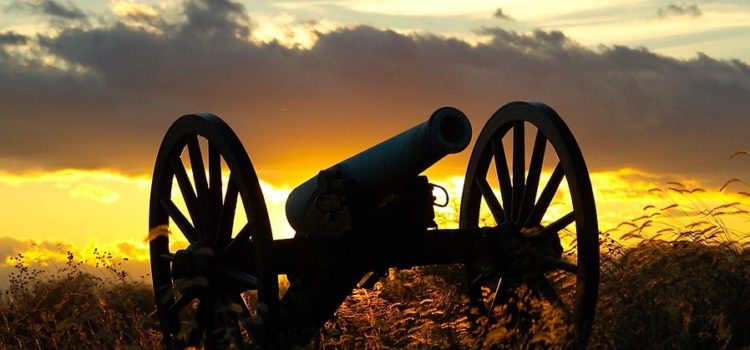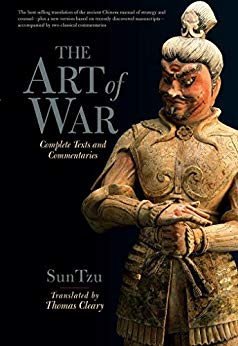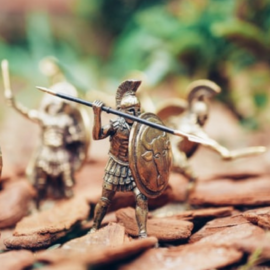

This article is an excerpt from the Shortform summary of "The Art of War" by Sun Tzu. Shortform has the world's best summaries of books you should be reading.
Like this article? Sign up for a free trial here .
What is Sun Tzu’s philosophy in The Art of War? What are his main themes?
The Art of War by Sun Tzu is a renowned guide for how to engage in conflict and be successful in battle. Written more than two thousand years ago, Sun Tzu, a Chinese warrior and philosopher, details the nature of competition and psychology of leadership and provides strategies for how to approach both. Although his teachings are geared toward actual military conflict, the principles can be useful in all arenas of conflict or competition, even at a personal level. We’ll cover some of the primary aspects of Sun Tzu’s philosophy.
Sun Tzu’s Philosophy
Much of Sun Tzu’s philosophy teachings revolve around the concept that victory without direct fighting is the most advantageous way to win. Part of attaining this type of battle-free victory involves five traits of successful military operations: the Way, the weather, the terrain, the leadership, and discipline.
The Way, an integral part of Sun Tzu’s philosophy, describes the harmonious relationship between the government and civilian populace. When governments treat their people fairly and with respect, the people will be loyal and more apt to support government decisions when conflict arises. People will also be more willing to join in the conflict if they believe in the government they will be tasked to defend.
The weather means the literal seasons and conditions of whatever environment in which the battle will be waged. Certain weather conditions are not conducive for a military campaign. For instance, both winter and summer encompass dangerous conditions, such as blizzards or droughts, that can hinder the advancement, safety, health, and sustenance of a troop.
The terrain relates to the “lay of the land,” meaning the geographical and physical factors of certain types of terrain. These factors make a parcel of land either advantageous or disadvantageous for advancement or battle. Factors to consider include distance to be traveled, the layout of the terrain and accompanying effort required to cross it, the size of the land, and safety and dangers encompassed in the geography.
The leadership describes the acuity and competence of the person charged with leading a fighting force. A good leader should be intelligent, trustworthy, humane, courageous, and stern. When all of these factors are at play, the leader is capable of making sound decisions and can count on the people to support them.
Discipline relates to the structure and organization of the personnel hierarchy. Determining who is best suited for high-ranking roles, who is capable of being brave, and who is weaker than the others is as important in determining a strong strategy as supplies are for the health of the troops. Discipline is an important theme throughout Sun Tzu’s philosophy.
You should consider how these five traits affect both your side and your opponent. Only in knowing both your strengths and weaknesses, as well as those of the enemy, can you begin to form a strategic plan. When you understand these traits, you will be able to assess the likelihood of victory in any circumstance. If victory is not certain, you should not engage in conflict.
Strategic Use of Resources
Part of a competent strategy is the intelligent use of resources. This is key to Sun Tzu’s philosophy. Resources relate to everything needed for battle, including food, troops, money, and weapons.
Once you’ve assessed the five traits, amassing and training your fighting contingent is the next priority. You should only gather fighters when you deem the battle to be absolutely necessary and believe victory is the likely outcome. Amassing a force before you determine this exploits the motivation, energy, and good faith of the people. If you assemble forces too early, the public and troops will be weary when the need becomes a reality later.
Soldiers should be properly trained in combat tactics and shaped into a strong, loyal force through the use of rewards and punishments. Rewards and punishments should not be arbitrary. You should deliver both fairly across the ranks according to clear and legitimate boundaries. These types of rewards and punishments motivate people for success. Rewards and punishments handed out too readily or in a disparate manner will breed complacency and mistrust.
Reduce the use of supplies. You should avoid lengthy battles, which deplete food, money, and energy. When traveling great distances for battle, feeding off the enemy’s abandoned stores ensures your stores are maintained. Only use weapons when all other strategies for victory have been exhausted.
Strategic Maneuvering of Troops
After considering resources, Sun Tzu’s philosophy encourages generals to focus on troops. Momentum is the life force of any conflict. When momentum is on your side, you have the advantage. You can create this advantage by manipulating your enemy into action.
When the enemy is forced into action, they must adopt a certain formation. The formation of both your troops and the enemy’s speaks to the psychological conditions of each. Therefore, if the enemy takes a certain form, you can deduce their strengths and weaknesses, using the latter to create a strategy for attack. To avoid allowing the enemy to have this information about your forces, you should remain formless.
Formlessness is a manifestation of defense. When victory is not certain, you should lay low, fortify your position, see to the health of your troops, and appear unorganized. If your troops are unseen, your strategy cannot be known. If your strategy and strength are unknown, the enemy may be lulled into a state of complacency or bravado, both of which lead to careless behaviors. Deceiving the enemy is an important aspect of Sun Tzu’s philosophy.
Wait for a vulnerability to appear in the enemy, then attack that weakness swiftly using orthodox and unorthodox offensive tactics. Orthodox tactics signify traditional formations and fighting techniques. These are standard modes of battle, such as structured face-to-face combat. Unorthodox tactics include combat techniques outside the typical forms, including sneak attacks, espionage, and deception. When used in harmony, both tactics can lead to advantages in battle.
Finally, when you have the advantage, you are in a state of fullness. If you lose the advantage and are forced into offense, you are in a state of emptiness. If you are empty but your opponent is full, victory cannot be guaranteed. If victory cannot be guaranteed, you should adopt a defensive position. Fullness should only attack emptiness. If both sides are full, wait until a vulnerability opens up in your opponent, then attack.
Gaining Advantages
The lay of the land should be considered a branch of your strategy. There are several types of terrain, each encompassing advantages or disadvantages, depending on the nature of the geographical structure. For instance, easily passable terrain allows either side to move freely in and out, whereas unwelcoming terrain hinders the movement of either side, thereby presenting only disadvantages. On easily passable terrain, you want to gain position first and wait for the enemy, giving you the advantage of preparation. On unwelcoming terrain, no advantage is attainable, so you should avoid entering this terrain and be wary of opportunities for gain.
Likewise, there are several grounds on which a fighting force may traverse, and each involves a psychological consideration and suggested action. For instance, light ground describes the fringe of enemy territory, whereas heavy ground describes a position deeply entrenched in enemy territory. On light ground, retreat is easy and your troops are not fully immersed in the conflict. You should move through light ground quickly so as not to allow the troops’ motivation and mental commitment to wane. On heavy ground, retreat is more difficult. On this ground, your troops are resigned to the prospect of danger and will be more motivated to fight to the death. Understanding the terrain is a key aspect of Sun Tzu’s philosophy.
Understanding the different types of terrain and grounds is as essential to determining victory as training and assessment of the five traits are.
Sun Tzu’s Philosophy: The Goal Is to Win When It Is Easy
Strong leadership involves knowing when and how to mobilize during conflict. This is the essence of Sun Tzu’s philosophy. You must understand the constitution of your troops and officers and how to motivate them in varied circumstances. You must be cunning and intelligent in planning your strategy, but you must also be adaptable and capable of allowing the actions of the opponent to guide your decisions. The principles laid out in The Art of War will give you the wisdom and strategies you need to become this type of leader and learn how to seek victory when it can be attained swiftly and easily. If you can be disciplined enough to only enter into battle when victory is assured, you can manage any conflict in your life.
———End of Preview———

Like what you just read? Read the rest of the world's best summary of "The Art of War" at Shortform . Learn the book's critical concepts in 20 minutes or less .
Here's what you'll find in our full The Art of War summary :
- How to mislead your enemies to win the war
- Classic examples from Chinese history to illustrate Sun Tzu's strategies
- How to use spies to gather information and defeat your opponents






